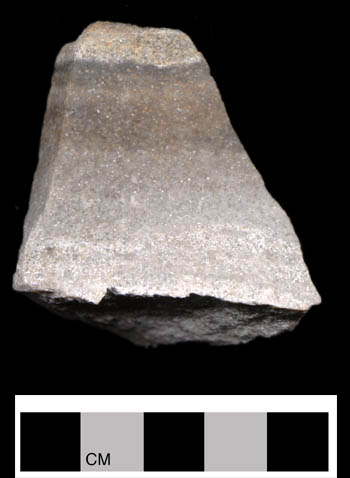Shakopee Chert
© 2003 by the Center For Social Research, Parkland College
Use the "back" button on your browser screen to return to the previous page.
TEXTURE:
The texture is typically medium, but both coarse and fine grained material does sometimes occur.
LUSTER:
Luster tends to be dull to waxy.
COLOR:
The base color will typically be white to gray. Contrasting shades of banding may occur. The characteristic oolites will be in contrasting shades of the background color, although in our illustration you will note that some are a tan color.
FOSSILS:
Fossils are absent (Ferguson and Warren 1992: 9).
STRUCTURAL CHARACTERISTICS:
The diagnostic feature of Shakopee is the presence of rather large (greater than 0.8 mm) and conspicuous oolites. If you go to the large image of the illustration you will observe that the matrix comprises a mass of "spots" and "doughnuts." The "spots" are the whole oolite. The "doughnuts" are where the oolite has been split revealing a center of contrasting color. The oolites are described as clumped in dendritic configurations (Ferguson and Warren 1992: 30).
Oneota Chert is also oolitic, but the oolites are smaller and far fewer in number.
HEAT TREATMENT:
Shakopee Chert is not typically heat treated.
SOURCE:
The illustrated specimen was generously provided by Jacquelin Ferguson and Robert Warren of the Illinois State Museum. It was recovered from a natural outcrop at the base of the north bluff of the Illinois River in the town of Utica, LaSalle County, Illinois.
 Click on image for full view.
Click on image for full view.

